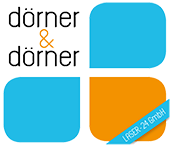General Surgery
Most small surgery procedures can be performed on an outpatient basis. A hospital admission is not always necessary, this saves patients time and stress. Routine surgical procedures which we perform daily are:
- Hernia
- Tennis Elbow
- Trigger Finger
- Tendovaginitis
Usually, we can find out whether a surgical procedure is suitable for you straight away during your first consultation appointment.
We will take good care of you in pleasant, comfortable surroundings, starting from your first visit to your final check, providing individual consultation, medical expertise with our dedicated, experienced medical team.
Trigger Finger condition
The “Trigger Finger” condition is a disease of the flexor tendons of the fingers. Due to a thickening of the tendon, it no longer slides under a ring ligament available for fixation. The tightness leads to a rubbing effect, which in turn increases the tendon sheath inflammation. There is a sudden “rapid” or “crunch” when the finger is stretched. At the beginning, this is mainly seen in the morning or after a longer rest of the hand, but later with every movement. At an advanced stage, a fixation can also occur, in which case the finger can neither be bent nor stretched.
All fingers can be affected, but the thumb, ring and middle finger are most commonly affected.
In some cases of the disease, however, the “classic” snapping does not occur. There is pronounced pain when the fist is closed or when the fingers are stretched. This symptom is also very pronounced, especially in the morning.
Tendovaginitis
Tendovaginitis is an inflammation of the tendons usually caused by repeated minor injury. It usually occurs at the back of the thumb and results in pain
What is Tendovaginitis de Quervain?
It is an infection of the tendon sheaths of the thumb extensor tendons of the wrist. It is caused by an overload. A is caused by scarring and consequent narrowing of the tendon sheath, resulting in considerable pain when the thumb is moved because the tendon can no longer slide freely.
Tennis Elbow
What is Tennis Elbow
A tennis elbow, or “epicondylitis” in technical terms, describes a painful irritation of the muscle attachments at the thumb-side bone projection of the elbow. Most affected are middle-aged men and women, i.e. 35-55 years old. As a rule, most people are not tennis players, but rather craftsmen, DIY enthusiasts, housewives, or computer operators .
Most of smaller surgeries can be done on an outpatient basis.
Hernia, Typewriter’s cramp, tennis elbow, golfer’s elbow and snap finger are treated regularly in our clinics with years of experience.
We will determine if an outpatient surgery is suitable for you.
We will look after you with personal attention from first symptom to final check-up.



